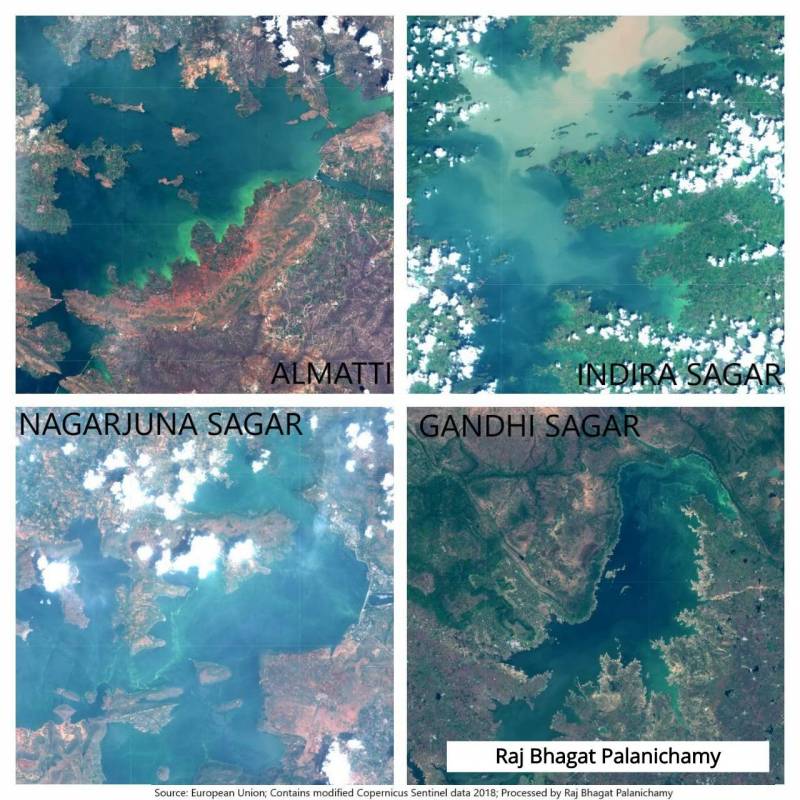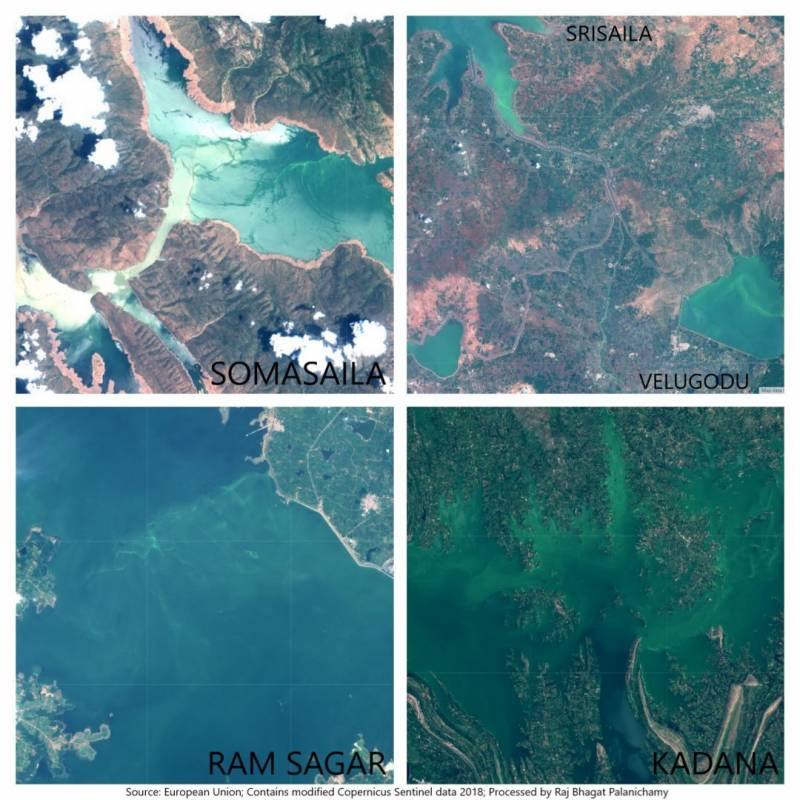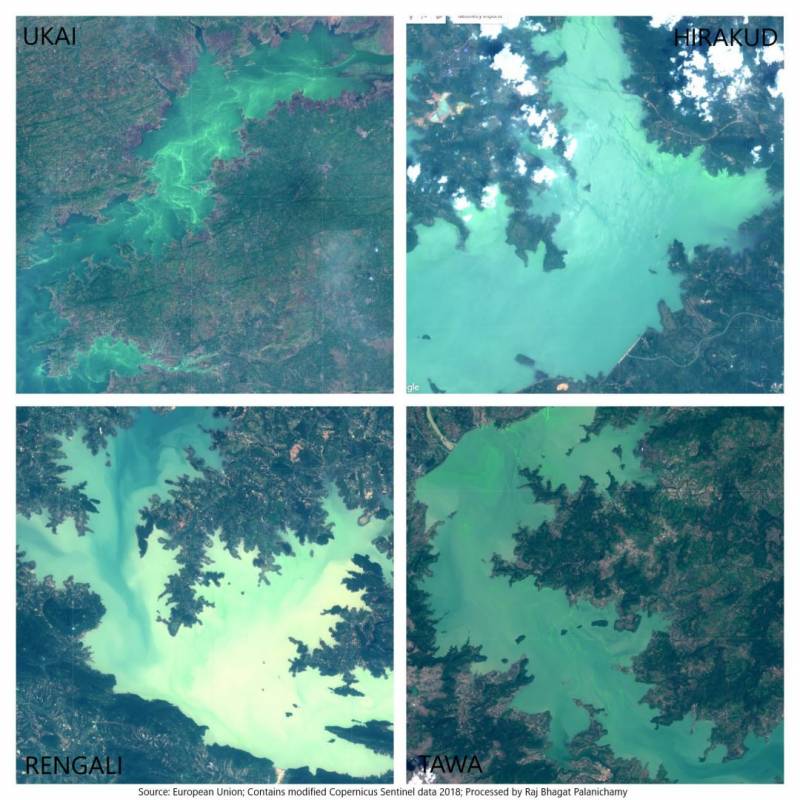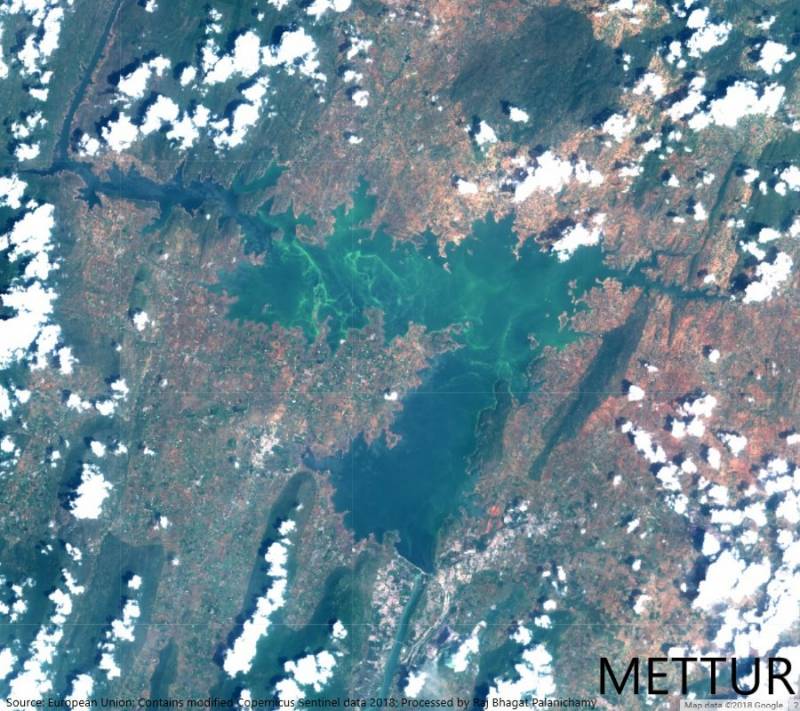Satellite images: Algae could choke aquatic life in Sriram Sagar, other dams
By Dheeshma
Hyderabad: Blue-green clouds are spreading in the waters of Indian reservoirs, including the Sriram Sagar in Telangana, show satellite images. These visuals of January 12 point to an algal bloom, which is a threat to aquatic life in these water bodies, say experts. When algae spread in a water source, its dissolved oxygen content goes down, affecting the population of fish and other creatures living there.
The 'mini algal bloom' could have originated from the upstream or nearby agricultural land due to excessive fertiliser usage or release of untreated sewage into these reservoirs, according to the experts.
Other than Sriram Sagar, the invasion of algae has also been spotted in many dams, including Srisailam, Vaigai, Nagarjuna Sagar, Gandhi Sagar, Indira Sagar, Almatti and Mettur. Here are a few satellite images acquired by satellite Copernicus EU between September and October 2018.



�
Subha Rao, a former scientist at the International Crops Research Institute for the Semi-arid Tropics (ICRISAT), calls the growth of the algae the failure of states in developing a sewage master plan for cities.
He said, “India witnessed rapid physical growth. Across the country, a lot of urbanisation happened. Even small states like Kerala witnessed tourism development. However, in spite of these large scale developments, we do not have a masterplan for the sewage systems in the country. Every authority is permitting construction. But because of the absence of a master plan for sewage, no authority is assessing the likely increase in the sewage load. Since there is no master plan, the sewage load is joining the natural drainage.”
In cities like Bangalore, Hyderabad and Chennai, sewage is directly flowing into lakes and from there to rivers or sea. As a result, reservoirs around these cities get affected. Apart from the chemicals from agricultural land, the sewage load nowadays has sharply increased, Rao said. This threatens the country's water quality as a whole and will also have a negative impact on agriculture systems.
�
Rao also fears that the algal bloom could affect the dedicated functions of reservoirs. “Some of them are exclusively for irrigation. Some are for drinking water; some are multi-purpose. For instance, Sriram Sagar is also for power generation. We do not know how the algal bloom is going to affect power generation. And there are no studies on this. So this can be considered as a warning signal. It clearly shows the absence of continuous studies.”
Compared to fertilisers used in farm fields, Rao said, untreated waste is the primary source of algal bloom in the country. “Sewage waste and fertilisers are the major contributing sources for algal blooms. But to authenticate the real source, for instance in Mettur dam, we need to study the growth of urbanisation in the upstream of that dam. Agriculture as such is only declining in India. It's not improving. No new land is coming under irrigation. Probably they might be using more fertilisers and more pesticides. So it's the increase in fertiliser input and increase in towns and cities.”